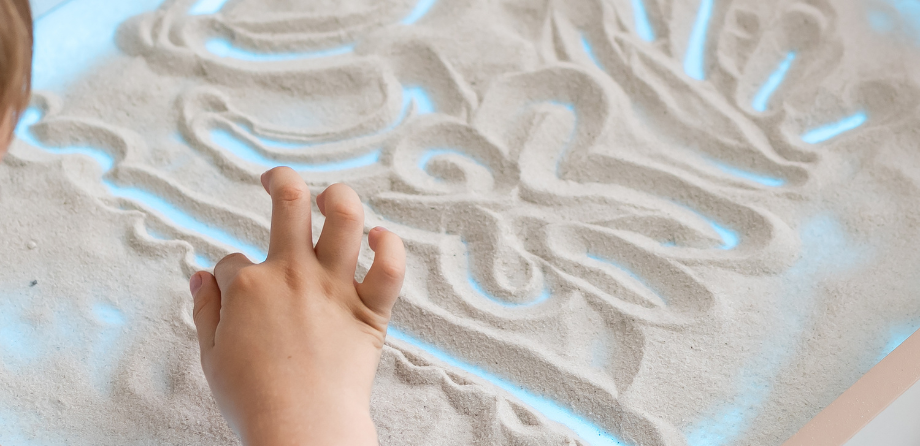
Early years activity: Big marks, little hands
Mark making starts long before children pick up a pencil – and sand is the perfect sensory surface to explore it. This simple and engaging activity invites curious children to make their mark, build those early writing muscles and express themselves creatively and playfully.
Big marks, little hands learning aims
- Begin to understand that marks and symbols can carry meaning
- Enjoy making marks freely and start to assign meaning to them
- Develop fine motor control and hand-eye coordination through movement and grasping tools
- Explore different textures and tools for mark making.
Resources you will need for this activity
- Shallow tray
- Clean, dry sand
- A variety of mark making tools such as paintbrushes, sticks, feathers, toy cars, small combs, ear buds etc.
Big marks, little hands activity outline
- Fill the tray with a thin, even layer of sand
- Invite children to use their fingers or a variety of tools to make marks in the sand
- Encourage them to experiment freely – drawing lines, swirls, shapes, patterns, or pictures, following their own interests
- Model rich vocabulary as they explore, using words like ‘swirly’, ‘straight’, ‘smooth’, and ‘bumpy’ to describe the patterns they are making
- Observe and engage by commenting on their marks and asking open-ended questions such as, “Can you tell me about your pattern?” or “Which tool made the best marks?”
- Capture the process by taking photos of the children in action. Use these to celebrate their learning with parents.
How to extend this idea
Take the activity outside using a larger sand tray or a patch of soil, adding natural tools like twigs, shells, and stones for even more sensory exploration.
NDNA products to support you with this activity
Your Essential Guide to Working with Children Under Three – publication
Disclaimer: Activities with children must always be risk assessed, including for allergies or choking. Children must always have adequate supervision. Resources and materials must always be appropriate for children’s age and stage of development.
- Activity
- MyNDNA
Similar Articles
How Parkfield Nursery Supported a Colleague Through Cancer Treatment

Top tips: Singing in the early years


